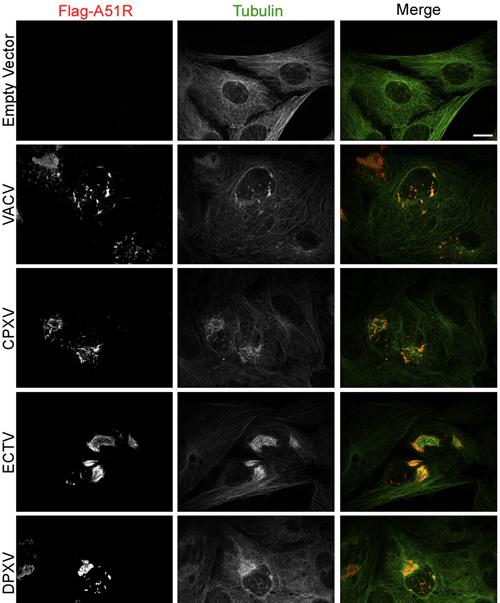Poxviruses are a diverse group of DNA viruses that infect both invertebrate and vertebrate hosts. Most infamous is the variola virus, the causative agent of smallpox, which remains the deadliest infectious disease in human history.
Despite the eradication of smallpox by 1980, other highly pathogenic poxviruses, such as the monkeypox virus, continue to cause devastating human diseases.
Due to the large size of their genomes, poxviruses can encode 200 or more proteins, and several of these serve as inhibitors of various host immune defenses while many other poxvirus proteins remain to be characterized. Therefore, identifying and characterizing poxvirus-encoded immune evasion factors is integral to understanding how these viruses cause such pathogenic infections in their hosts. In turn, we may use these viral immunomodulators as tools to better understand the host defenses they inhibit.
Using our arbovirus-Lepidopteran host systems, we have found poxvirus co-infection of Lepidopteran cells to rescue arbovirus replication. Using genetic and RNAi screening, we identified poxvirus A51R genes as genetic determinants of arbovirus rescue in Lepidopteran cells during co-infection.
We have shown the A51R gene family to encode a group of highly conserved, microtubule-stabilizing virulence factors that, remarkably, promote virus replication in both Lepidopteran and vertebrate hosts. We are actively investigating how these fascinating proteins inhibit antiviral defenses in such disparate hosts.
 Co-localization of Flag-tagged A51R proteins from diverse poxviruses. Abbreviations: VACV, Vaccinia virus; CPXV, Cowpox virus; ECTV, Ectromelia virus; DPXV, Deerpox virus. Image adapted from Gammon et al. eLife (2014); 3:e02910.
Co-localization of Flag-tagged A51R proteins from diverse poxviruses. Abbreviations: VACV, Vaccinia virus; CPXV, Cowpox virus; ECTV, Ectromelia virus; DPXV, Deerpox virus. Image adapted from Gammon et al. eLife (2014); 3:e02910.